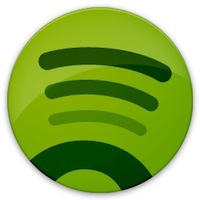Are labels beginning to turn their backs on Spotify, and why music services could mean the end of the second chance…
by Tim McMahan, Lazy-i.com
This will be remembered as the year music went to the cloud, with Amazon, Google, Spotify and most recently, iTunes Match presumably changing the landscape in terms of how we listen to new music.
With that in mind, last Friday Wired posted this story with the headline: “200+ Labels Withdraw Their Music From Spotify: Are Its Fortunes Unravelling?” In it, Wired reported that music distributor STHoldings, which represents more than 200 labels, was withdrawing its entire catalog from Spotify, Napster, Simfy and Rdio.
Sayeth STHoldings in the article, “As a distributor we have to do what is best for our labels. The majority of which do not want their music on such services because of the poor revenues and the detrimental affect on sales. Add to that the feeling that their music loses its specialness by its exploitation as a low value/free commodity.”
The Wired article pointed to this item in Digital Music News with the headline “Study: Spotify Is Detrimental to Music Purchasing…” that quotes a study from NPD Group and NARM (National Association of Recording Merchandisers) that seems to state that a percentage of consumers were satisfied with merely having access to music, and not owning it. Translated, they listen to their music on Spotify and then don’t buy it.
I saw this exact situation played out right in front of my eyes a month or so ago when Big Harp played at Slowdown. A guy who was a friend of a friend said after Big Harp played, “I love their music. I should probably buy a copy of their CD, but I already have it on Spotify.” I, of course, preceded to call the guy a cheap bastard and tried to guilt him into going to the merch table, to no avail.
Spotify responded to STHoldings in the Wired article by saying artists are receiving “substantial” revenues from Spotify. “Spotify is now the second single largest source of digital music revenue for labels in Europe (IFPI, April 2011) and we’ve driven more than $150 million of revenue to rights holders (ie whoever owns the music, be it artists, publishers or labels) since our launch three years ago.”
It should be noted that I didn’t recognize any of the labels that STHoldings represents (read the list here). Just how significant is their withdrawal beyond being a touch point for articles like this one? Who knows…
But let me add this to the mix: Since I began using Spotify (a couple months ago?) it’s been most effective in steering me away from making (what I assume are) bad purchases — i.e., I can now conveniently listen to just about any record that Pitchfork has given a rating of 8 or higher and decide for myself if it’s worth buying or not.
The ultimate downside to all this: I’m now less likely to give a record the second or third “listen” that I would have given it had I purchased it (or received a promo copy). In other words, music no longer is given a chance to “grow on you.” Some of the best records can take weeks and months of listens to sink in. With Spotify and the other services, artists are given one shot to impress the listener before they move onto something else, never to return.
* * *
Read Tim McMahan’s blog daily at Lazy-i.com — an online music magazine that includes feature interviews, reviews and news. The focus is on the national indie music scene with a special emphasis on the best original bands in the Omaha area. Copyright © 2011 Tim McMahan. All rights reserved.



Recent Comments